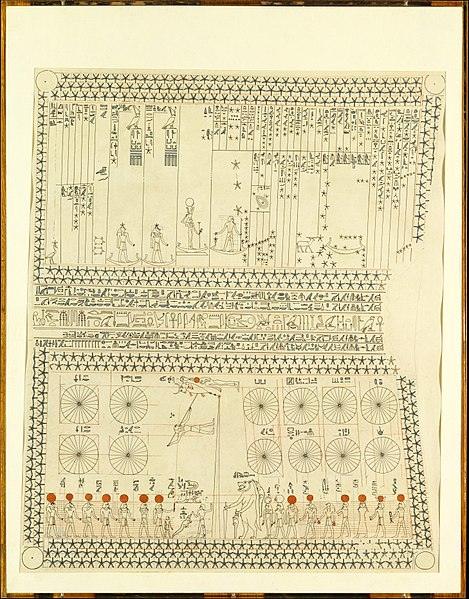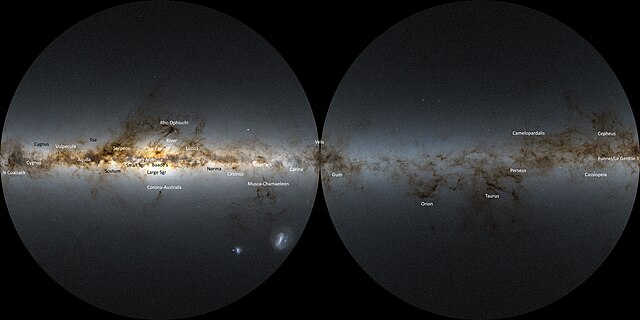A constellation is an area on the celestial sphere in which a group of visible stars forms a perceived pattern or outline, typically representing an animal, mythological subject, or inanimate object.
Babylonian tablet recording Halley's Comet in 164 BC
Egyptian star chart and decanal clock, from the ceiling of Senenmut's tomb, c. 1473 BC
The Milky Way as seen by Gaia, with prominent dark features labeled in white, as well as prominent star clouds labeled in black.
Inca dark cloud constellations in the Mayu (Celestial River), also known as the Milky Way. The Southern Cross is above Yutu, while the eyes of the Llama are Alpha Centauri and Beta Centauri.
A star is a luminous spheroid of plasma held together by self-gravity. The nearest star to Earth is the Sun. Many other stars are visible to the naked eye at night; their immense distances from Earth make them appear as fixed points of light. The most prominent stars have been categorised into constellations and asterisms, and many of the brightest stars have proper names. Astronomers have assembled star catalogues that identify the known stars and provide standardized stellar designations. The observable universe contains an estimated 1022 to 1024 stars. Only about 4,000 of these stars are visible to the naked eye—all within the Milky Way galaxy.
Image of the Sun, a G-type main-sequence star, the closest to Earth
A star-forming region in the Large Magellanic Cloud
Stars in the night sky
Infrared image from NASA's Spitzer Space Telescope showing hundreds of thousands of stars in the Milky Way galaxy








